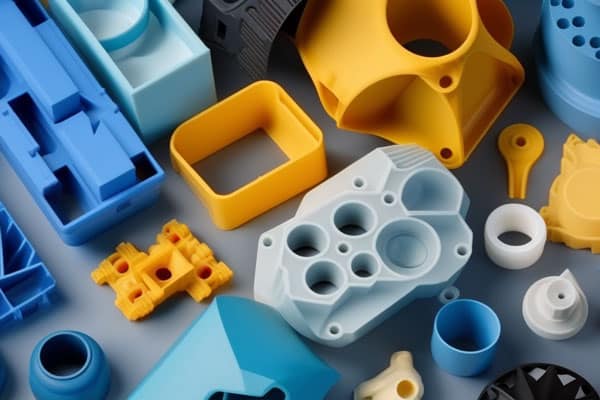Rapid tooling, also known as prototype mold, prototype tooling, or soft tooling, lets you to produce components in a timely and economical manner. It is renowned for its- quick turnaround time, affordability, straightforward procedure, and user-friendliness.
This approach provides excellent overall economic advantages while satisfying certain functional demands. A common technique for testing a part’s functioning and design prior to mass production is rapid tooling.
Things to Consider When Using Rapid Tooling
Remember these considerations while developing your prototype using rapid tooling:
- The mold must be robust and long-lasting: The injection molding method involves injecting hot materials into the mold at high pressure – therefore, the mold has to be robust enough to withstand the pressure. It must be able to bear this strain without cracking.
- The mold needs to be smooth: The smoothness of the mold is also important for the correct injection of the plastic. Certain rapid tooling techniques may provide a rough surface by building the mold layer by layer. In some situations – more finishing may be necessary to smooth out the prototype.
Rapid Tooling vs Conventional Tooling
Making molds, dies, and other tools the old-fashioned way is known as conventional tooling. Forming materials like plastic, metal, and composites into final goods requires a number of processes, including design, machining, and assembly.
However, since manufacturing timeframes might take weeks or even months, it can be expensive and sluggish. Conventional tooling has drawbacks in terms of speed, cost, material selection, and complexity while producing excellent results.
The following are the differences between rapid tooling and traditional tooling:
- Speed: Rapid tooling produces tools or prototypes in a matter of hours or days, which is much quicker. It might take weeks or months to complete traditional tooling.
- Cost: Rapid tooling offers high-quality components at a lower cost by omitting many stages in the conventional process.
- Complexity: While quick tooling can handle more intricate and complicated designs, conventional tooling is only capable of handling basic forms.
- Material: Conventional tooling usually uses only materials like steel and aluminum, while rapid tooling may employ a wider variety of materials, such as metals and composites.
- Accuracy: Rapid tooling is perfect for large production because it provides very stable and accurate tools. While less versatile, conventional instruments are also accurate.
Rapid Prototyping vs Rapid Tooling
Rapid tooling and rapid prototyping are not the same – despite their similar names:
Rapid prototyping – produces an initial prototype of a product to test and refine its design. While rapid tooling – prepares a tool or mold for mass production.
- Output: While rapid tooling creates a – mold or tool – that can manufacture a large number of goods. Rapid prototyping usually – yields one or a few functional prototypes.
- Materials: While rapid tooling employs a – broader variety of materials – including metals. The rapid prototyping uses materials that are similar to the finished product – such as plastics or resins.
- Lead Time: Since rapid prototyping eliminates the need to create a tool – it is quicker. Because rapid tooling requires the creation of a mold or tool – it takes longer.
- Cost: Because rapid tooling entails more intricate procedures and the development of a tool for mass production — it is often more costly.
Comparing Hard and Soft Tooling
There are two prevalent forms of quick tooling – soft tooling and hard tooling.
Soft Tooling: Makes use of – urethane casting and silicone molds. It works well for low-volume manufacturing, bridge tooling, and prototyping.
Although it is quicker and less expensive to create – hard tooling is more durable.
Hard Tooling: Usually composed of – steel or aluminum – this kind of tooling is utilized in injection molding and is designed to withstand high production volumes. Compared to soft tooling – it is more costly but also more durable.
Important distinctions between hard and soft tooling
- Durability: Made of metals like steel or aluminum and intended for rigorous usage hard tooling is long-lasting. Soft tooling is designed for – temporary usage and is composed of pliable materials like foam or rubber.
- Cost: Because hard tooling requires complicated production and robust materials – it is more costly. Soft tooling is more economical and perfect for – low-volume production or prototypes.
Applications and Industry Impact
The development of rapid tooling has had profound implications across various industries:
Prototyping:
Rapid tooling allows for rapid prototyping, which is essential for design validation and can significantly shorten product development cycles.
Customization:
Industries that require customized products benefit greatly from rapid tooling, allowing for tailored solutions without the long wait times historically associated with conventional tooling.
Low volume production:
As the market increasingly demands small batch sizes, the cost savings and speed offered by rapid tooling make it an attractive option.
Rapid tooling stands out primarily for its speed, flexibility and cost-effectiveness for low volume production, particularly in prototyping and the initial stages of product development. Traditional tooling, while often more suitable for high volume manufacturing, involves more extended lead times and higher initial costs due to its reliance on conventional materials and methods. Each tooling type has its place in the manufacturing landscape, and the choice will depend on the specific project requirements, volume, and timeline.
Reference
*Image from https://www.engineering-group.com/

